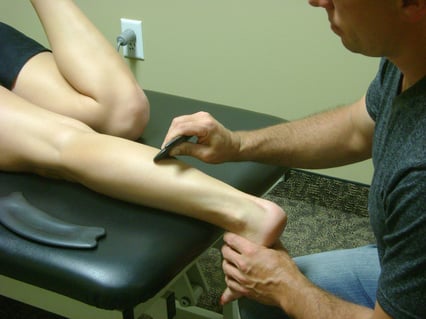Is your practice in a rut? According to Perry Nickelston, DC, FMS, SFMA, of Dynamic Chiropractic, every practice can benefit from a "reboot" by refocusing on five basic fundamentals. By being open to new treatment techniques or equipment and being vigilant about re-assessing patients at each visit, chiropractors can enjoy not only improved practice growth, but more satisfied patients.
This article was written by Perry Nickelston, DC, FSM, SFMA for Dynamic Chiropractic. The article was published on May 6, 2012 and can be found here.
So often we get caught up in trying to discover the "magic quick fix" for practice success and patient retention, while in reality, it all comes down to mastering the fundamentals.
The good news is you can refocus your efforts on what I like to call the "Fundamental 5" and start filling those cracks. These basics matter. They are the most important components of your care program with every patient/client. Fundamentals help you own therapeutic outcomes and steer you away from cookie-cutter, standardized care.
Fundamental #1: Re-Assess at Every Visit
 via shutterstock.com via shutterstock.com |
You don't have to wait two to four weeks for re-evaluations and assessments. It's not a law of practice. Re-assess patient progress and changes every visit. Note a change in symptoms, function and ranges of movement, as well as intensity, frequency and duration of pain. Observe how the patient responds mentally and physically. How are their mental state, spirit, energy and zest for life?
Notice how they get on and off the table. I recommend having the patient stand up and move around the treatment room, attempting various positions to gain feedback from the body. Ask them for feedback after each treatment. Evaluations should occur with each visit in conjunction with your regular assessments.
Fundamental #2: Lock in Stability
When restoring proper mobility to the joints and soft-tissue extensibility of the body, it's imperative to establish (lock in) stability control for the new range of motion. The length-tension relationship of movement vectors change with treatment intervention, and the nervous system now needs activation to steady local and global stabilizers, preventing the "rebounding effect."
Underlying stability dysfunction can be the catalyst for developing mobility issues. The body locks down joints and tightens soft tissue in a reflexive response to compensate for the lack of normal stability. After each treatment, simply have your client perform basic movement patterns of single-leg stances, balancing on a rocker board, or doing a squat pattern to comfort level. You will notice a dramatic improvement in therapeutic retention.
Fundamental #3: Treatment Order
Your system and a combination of therapeutic interventions can have a profound impact on lasting outcomes. Over the course of my 15 years of clinical practice, I have found the following combination to be the most successful in patient satisfaction and maximizing clinical results. The following protocol also helps in establishing a baseline fundamental system for optimizing patient flow for the busy practice.
 |
However, the caveat is to always remember that the care program is dictated by the client's individual history. Passive modalities and chosen methodologies may be used based on your clinical experience. These steps are based on principles of body restoration, as opposed to methods of obtaining those end results.
- Step 1: Clear fascial connective tissue and reduce tension.
- Step 2: Alleviate active, satellite and latent trigger points referring pain and causing movement dysfunction.
- Step 3: Manipulate/adjust hypomobile joints.
- Step 4: Establish stability and movement patterns from activation exercises to maximize joint centration.
Fundamental #4: Focus on Individual Care Programs
There is no room for cookie-cutter care programs in the current model of practice. Every therapeutic intervention should be based on the individual human being in front of you. Their life history—physically, spiritually, emotionally and mentally—all must play a part in your treatment program. Pain syndromes may be caused by many different factors. Cookie-cutter programs assume the same path of dysfunction. If you are not making positive changes in a patient's condition within several sessions, it is time to step back and re-assess your approach.
The body will tell you what it likes and does not like by the response to care. This is even more critical when selecting corrective exercise and rehabilitation programs for your clients. The client dictates the exercise, not the injured area. Be steadfast in delivering individual quality care.
Fundamental #5: Change It Up
Do not fall into a treatment rut. Doing the same thing over and over leads to complacency and burnout. There is excitement in adding new modalities and treatment techniques. Invest in your continuing education by experiencing new ways to help your practice and your patients. Open your mind up to new methodologies and paradigms. Change can sometimes be scary and awkward because it involves stepping outside your comfort zone. However, the only way to grow is by challenging that zone and stepping beyond it.
If you make a true concerted effort to master the Fundamental 5, you will make a positive impact on your practice. Simple steps pay huge dividends. Set yourself apart and connect with your patients. They are craving it.

